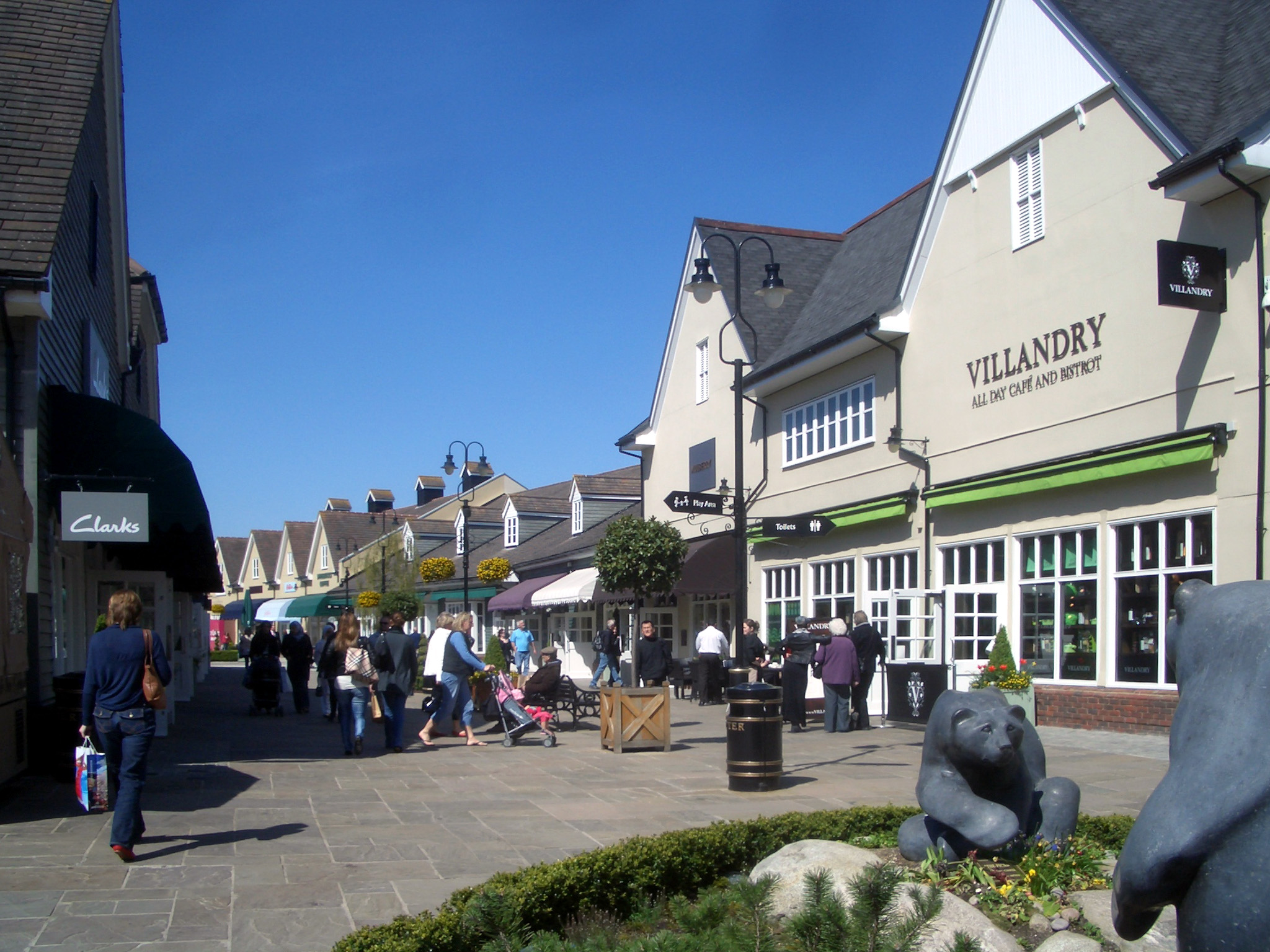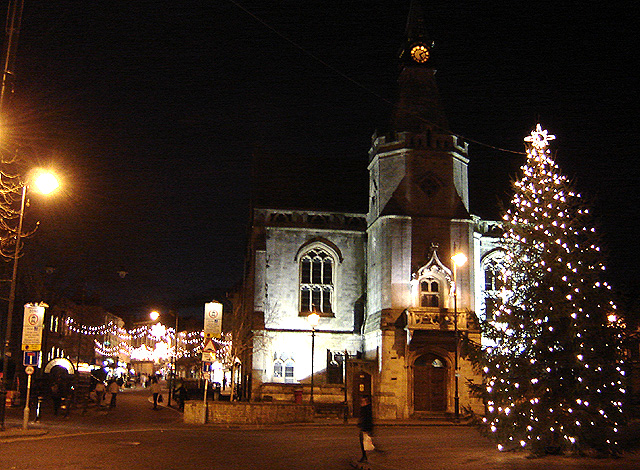|
Deddington
Deddington is a civil parish and small town in Oxfordshire about south of Banbury. The parish includes two hamlets: Clifton and Hempton. The 2011 Census recorded the parish's population as 2,146. Deddington is a small settlement but has a commercial centre including a market place, which hosts a popular monthly farmer’s market. It has been a market town probably since the 12th century. One of the Hundred Rolls of King Edward I from 1275–76 records Deddington as a borough. It has a deli, coffee shop, restaurant, three pubs and a town hall (see below). Its football team is called Deddington Town FC. Geography The parish is about wide east–west, about wide north–south and has an area of about . Watercourses bound it on three sides: The River Cherwell to the east, its tributary the River Swere to the north and the Sowbrook (''i.e.'' "South Brook") to the south. Here the Cherwell also forms the county boundary with Northamptonshire. To the west the parish is bounded by f ... [...More Info...] [...Related Items...] OR: [Wikipedia] [Google] [Baidu] |
Deddington Castle
Deddington Castle is an extensive earthwork in the village of Deddington, Oxfordshire, all that remains of an 11th-century motte-and-bailey castle, with only the earth ramparts and mound now visible. The castle was built on a wealthy former Anglo-Saxon estate by Bishop Odo of Bayeux, half-brother of William the Conqueror. It was strengthened in the 12th century, with some stone defences added, but from the 13th century onwards it fell into disrepair, and the stone buildings were eventually dismantled and sold. The castle played a minor part in the English Civil War, but after Deddington's strategic importance waned, the site lay vacant for many decades, used only for grazing and forestry. In the 19th century the site was used for recreation and sports, until it was sold to the parish council in 1947. It now serves as a park and nature walk. The site is protected under UK law as a scheduled monument. __TOC__ History Following the Norman conquest of England in 1066, Odo cons ... [...More Info...] [...Related Items...] OR: [Wikipedia] [Google] [Baidu] |
Hempton, Oxfordshire
Hempton is a village in Deddington civil parish about south of Banbury in Oxfordshire. Hempton is on the B4031 road between Deddington and Chipping Norton, which was a turnpike from 1770 until 1871. Chapel and church Hempton has a former nonconformist chapel that is said to have been opened in 1840. It ceased to be used for worship in the 1950s and is now a private house. The Church of England parish church of St. John the Evangelist was completed in 1850 or 1851. Rev. William Wilson of Over Worton designed the Gothic Revival building and funded its construction. The building has Early English style lancet windows and a two-bay north arcade that led to a schoolroom. The church's font is a Norman one from Holy Trinity parish church, Over Worton. In its early decades St. John's was a licensed but unconsecrated chapel and independent of the Benefice of Deddington, but is now part of the benefice. Economic and social history Hempton has a number of cottages that we ... [...More Info...] [...Related Items...] OR: [Wikipedia] [Google] [Baidu] |
Clifton, Oxfordshire
Clifton is a hamlet by the River Cherwell in Deddington civil parish about south of Banbury, Oxfordshire, England. Clifton is on the B4031 road between Deddington and Croughton, Northamptonshire. Chapels A dependent chapel of Deddington parish church still existed in Clifton in 1523 but seems to have disappeared by the 17th century. A Methodist chapel was built in Clifton in about 1815. It was a small brick building and has since been demolished. The Methodists replaced it in 1869 with a new brick and stucco chapel with plain lancet windows. It was still in use for worship in the 1950s but was disused by 1983 and is now a private house. A new Church of England chapel of Saint James the Great was completed in 1853. The Diocese of Oxford declared the chapel redundant in and sold it for secular commercial use in 1974. Community Clifton has a public house, the Duke of Cumberland's Head, which has recently re-opened with a new campsite and travelling caravan park. ... [...More Info...] [...Related Items...] OR: [Wikipedia] [Google] [Baidu] |
Banbury (UK Parliament Constituency)
Banbury, also informally known as Banbury and North Oxfordshire, is a constituency in Oxfordshire created in 1553 and represented in the House of Commons of the UK Parliament since 2015 by Victoria Prentis of the Conservative Party. She currently serves as Attorney General for England and Wales. In terms of electorate, Banbury was the 16th largest constituency in the United Kingdom at the time of the 2015 general election. Constituency profile The constituency has relatively high economic dependence on agriculture, as well as modern industry (particularly motorsport), research and development, public services and, to a lesser extent, defence. It contains two large market towns, Banbury and Bicester, where the majority of the electorate live. It is a partly rural seat, with the northwest of the constituency on the edge of the Cotswolds. The area has experienced significant urban growth and is popular with commuters who favour its fast transport links to Birmingham, Oxford a ... [...More Info...] [...Related Items...] OR: [Wikipedia] [Google] [Baidu] |
Cherwell (district)
Cherwell ( ) is a local government district in northern Oxfordshire, England. The district takes its name from the River Cherwell, which drains south through the region to flow into the River Thames at Oxford. Towns in Cherwell include Banbury and Bicester. Kidlington is a contender for largest village in England. The district was formed on 1 April 1974, under the Local Government Act 1972, by a merger of the municipal borough of Banbury, Bicester urban district, Banbury Rural District and Ploughley Rural District. Geography The Northern half of the Cherwell district consists mainly of soft rolling hills going down towards the River Cherwell, but the southern half of the district around Bicester is much flatter. Much of the district is soft rolling hills with the northwest of the district lying at the northern extremity of the Cotswolds. Transport Much of the district is within easy reach of the M40, with junctions 9, 10 and 11 in the district. It also has good rail links w ... [...More Info...] [...Related Items...] OR: [Wikipedia] [Google] [Baidu] |
Banbury
Banbury is a historic market town on the River Cherwell in Oxfordshire, South East England. It had a population of 54,335 at the 2021 Census. Banbury is a significant commercial and retail centre for the surrounding area of north Oxfordshire and southern parts of Warwickshire and Northamptonshire which are predominantly rural. Banbury's main industries are motorsport, car components, electrical goods, plastics, food processing and printing. Banbury is home to the world's largest coffee-processing facility (Jacobs Douwe Egberts), built in 1964. The town is famed for Banbury cakes, a spiced sweet pastry dish. Banbury is located north-west of London, south-east of Birmingham, south-east of Coventry and north-west of Oxford. History Toponymy The name Banbury may derive from "Banna", a Saxon chieftain said to have built a stockade there in the 6th century (or possibly a byname from ang, bana meaning ''felon'', ''murderer''), and / meaning ''settlement''. In Anglo Saxon i ... [...More Info...] [...Related Items...] OR: [Wikipedia] [Google] [Baidu] |
Oxfordshire
Oxfordshire is a ceremonial and non-metropolitan county in the north west of South East England. It is a mainly rural county, with its largest settlement being the city of Oxford. The county is a centre of research and development, primarily due to the work of the University of Oxford and several notable science parks. These include the Harwell Science and Innovation Campus and Milton Park, both situated around the towns of Didcot and Abingdon-on-Thames. It is a landlocked county, bordered by six counties: Berkshire to the south, Buckinghamshire to the east, Wiltshire to the south west, Gloucestershire to the west, Warwickshire to the north west, and Northamptonshire to the north east. Oxfordshire is locally governed by Oxfordshire County Council, together with local councils of its five non-metropolitan districts: City of Oxford, Cherwell, South Oxfordshire, Vale of White Horse, and West Oxfordshire. Present-day Oxfordshire spanning the area south of the Thames was h ... [...More Info...] [...Related Items...] OR: [Wikipedia] [Google] [Baidu] |
Jurassic
The Jurassic ( ) is a Geological period, geologic period and System (stratigraphy), stratigraphic system that spanned from the end of the Triassic Period million years ago (Mya) to the beginning of the Cretaceous Period, approximately Mya. The Jurassic constitutes the middle period of the Mesozoic, Mesozoic Era and is named after the Jura Mountains, where limestone strata from the period were first identified. The start of the Jurassic was marked by the major Triassic–Jurassic extinction event, associated with the eruption of the Central Atlantic magmatic province, Central Atlantic Magmatic Province. The beginning of the Toarcian Stage started around 183 million years ago and is marked by an extinction event associated with widespread Anoxic event, oceanic anoxia, ocean acidification, and elevated temperatures likely caused by the eruption of the Karoo-Ferrar, Karoo-Ferrar large igneous provinces. The end of the Jurassic, however, has no clear boundary with the Cretaceous and i ... [...More Info...] [...Related Items...] OR: [Wikipedia] [Google] [Baidu] |
Outer Bailey
An outer bailey or outer ward is the defended outer enclosure of a castle.Friar, Stephen (2003). ''The Sutton Companion to Castles'', Sutton Publishing, Stroud, 2003, p. 22. It protects the inner bailey and usually contains those ancillary buildings used for the management of the castle or the supply of its occupants. These domestic buildings could include workshops, livestock stalls and stables; storage facilities such as barns, sheds and granaries, as well as quarters for servants such as maids, farm workers, and even the castle governors or castellans. In many cases there was also a brewery, a bakehouse and a kitchen, if the latter was not located in the hall or ''palas''. An outer bailey was often called a base court in England. Depending on topography it could also be referred to as a lower bailey or lower ward, the keep being in the upper bailey or ward. Chepstow Castle has lower, middle and upper baileys. The domestic buildings of the continental ''schloss'', often a st ... [...More Info...] [...Related Items...] OR: [Wikipedia] [Google] [Baidu] |
Manorialism
Manorialism, also known as the manor system or manorial system, was the method of land ownership (or "tenure") in parts of Europe, notably France and later England, during the Middle Ages. Its defining features included a large, sometimes fortified manor house in which the lord of the manor and his dependents lived and administered a rural estate, and a population of labourers who worked the surrounding land to support themselves and the lord. These labourers fulfilled their obligations with labour time or in-kind produce at first, and later by cash payment as commercial activity increased. Manorialism is sometimes included as part of the feudal system. Manorialism originated in the Roman villa system of the Late Roman Empire, and was widely practiced in medieval western Europe and parts of central Europe. An essential element of feudal society, manorialism was slowly replaced by the advent of a money-based market economy and new forms of agrarian contract. In examining the o ... [...More Info...] [...Related Items...] OR: [Wikipedia] [Google] [Baidu] |
Roman Catholic Diocese Of Bayeux
The Roman Catholic Diocese of Bayeux and Lisieux (Latin: ''Dioecesis Baiocensis et Lexoviensis''; French: ''Diocèse de Bayeux et Lisieux'') is a diocese of the Catholic Church in France. It is coextensive with the Department of Calvados and is a suffragan to the Archdiocese of Rouen, which is also in Normandy. At the time of the Concordat of 1802, the ancient Diocese of Lisieux was united to that of Bayeux. A pontifical brief in 1854 authorized the Bishop of Bayeux to call himself Bishop of Bayeux and Lisieux. History A local legend, found in the breviaries of the 15th century, makes St. Exuperius to be an immediate disciple of St. Clement (Pope from 88 to 99), and thus the first Bishop of Bayeux. His see would therefore be a foundation of the 1st century. St. Regnobertus, the same legend tells us, was the successor of St. Exuperius. But the Bollandists, Jules Lair, and Louis Duchesne found no ground for this legend; it was only towards the end of the 4th century or beginn ... [...More Info...] [...Related Items...] OR: [Wikipedia] [Google] [Baidu] |
Odo, Earl Of Kent
Odo of Bayeux (died 1097), Earl of Kent and Bishop of Bayeux, was the maternal half-brother of William the Conqueror, and was, for a time, second in power after the King of England. Early life Odo was the son of William the Conqueror's mother Herleva and Herluin de Conteville. Count Robert of Mortain was his younger brother. There is uncertainty about his birth date. Some historians have suggested he was born around 1035. Duke William made him bishop of Bayeux in 1049. It has been suggested that his birth was as early as 1030, making him about nineteen rather than fourteen at the time. Norman Conquest and after Although Odo was an ordained Christian cleric, he is best known as a warrior and statesman, participating in the Council of Lillebonne. He funded ships for the Norman invasion of England and is one of the very few proven companions of William the Conqueror known to have fought at the Battle of Hastings in 1066. The Bayeux Tapestry, probably commissioned by him to ado ... [...More Info...] [...Related Items...] OR: [Wikipedia] [Google] [Baidu] |
.jpg)







